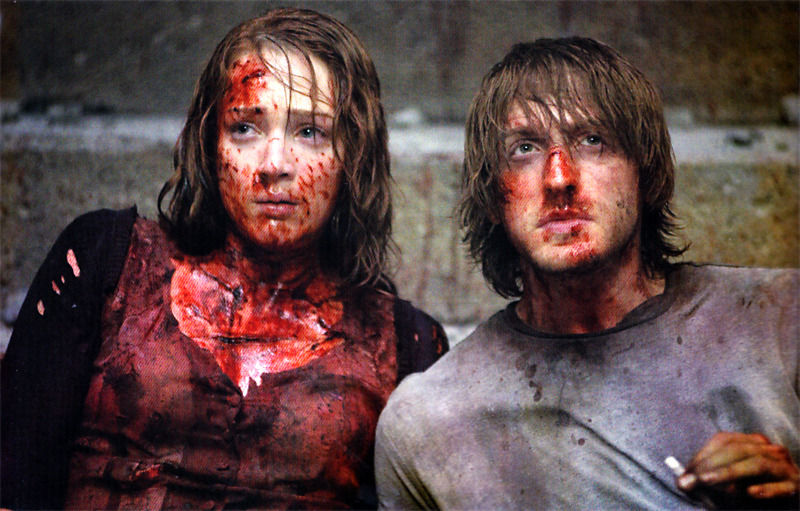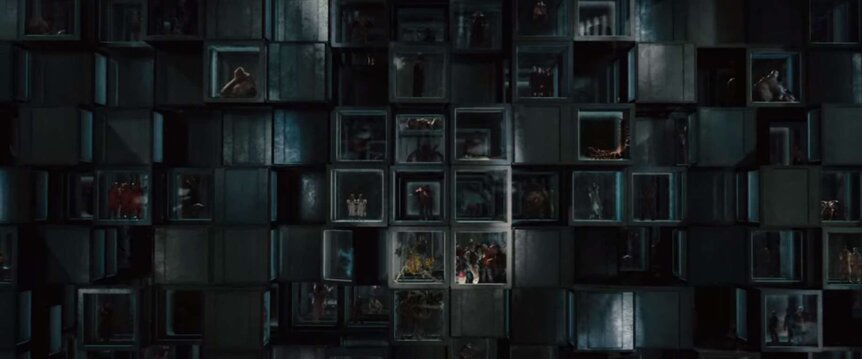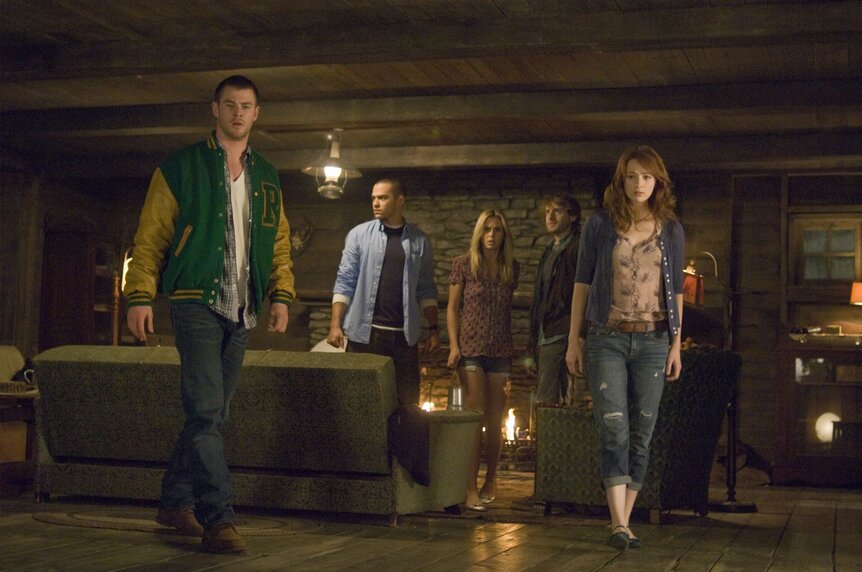Create a free profile to get unlimited access to exclusive videos, sweepstakes, and more!
Microbial monsters and chemical cocktails: The science behind 'The Cabin in the Woods'
If only they had listened to Mordecai.

The Cabin in the Woods, released ten years ago this week, was an instant classic in the horror genre. The way it lampooned favored horror tropes, twisting them on their heads, while still remaining faithful and adding a dimension to the stories which came before, was the perfect recipe for carnage and laughs.
The premise, for those of you who have somehow made it through the last decade without seeing it, centers on a secret facility known, appropriately enough, as The Facility. There, a group of people coordinate a series of human sacrifices, all over the world, to placate Lovecraftian gods slumbering beneath the Earth's surface. Only one of the sacrifices needs to succeed and, while there have been some close calls, it's always worked.
The local sacrifice takes place at the titular cabin in the woods, where a group of college students are about to be ceremoniously fed to an array of classic monsters. While the set dressing is fantastical and bloody, there are parts of The Cabin in the Woods which land pretty close to home.
A FACILITY FOR HIGH CONTAINMENT
The titular cabin in the woods is only the visible face of a much larger compound buried underground, a compound holding every monster you've ever heard of, and a bunch more you haven't. The Facility, and other buildings like it, all over the world, are the only thing protecting humanity from ancient horrors which could bring our species to its knees.
Werewolves, zombies, and killer mermaids aren't real (although, that's exactly what the folks at The Facility would want us to think) but our species has been at the mercy of killer creatures since time immemorial. These monsters aren't big, hairy beasts. In fact, you wouldn't even be able to see them without the right instruments. We're talking about microbes, those most ancient of invisible monsters. Luckily, just like in the movie, we've built up a few dozen facilities to contain them.
As we identify pathogenic risks to public health, organizations like the CDC and WHO work to reduce infections through the development of vaccines and post-infection therapies. In order to do that, scientists need to be able to isolate a pathogen and study it in the lab. Of course, doing that means intentionally putting people in close contact with an infectious disease of the types which are often highly transmissible and potentially fatal.
Aiming to do that as safely as possible means designing facilities for the storage and study of microbial monsters, deadly pathogens. In the case of smallpox, that work allowed humanity to completely eradicate a disease for the first and, to date, the only time in human history.
While there hasn't been a single naturally occurring case of smallpox since 1977, the disease does still exist in the lab. High containment labs (HCLs) exist in various countries around the world and house some of the world's deadliest diseases. The most robust level HCL is known as a BSL-4, which houses diseases with high levels of airborne transmission, potentially fatal symptoms, and no known treatment or vaccine. At the time of this writing, there are at least 60 such labs in existence.
These facilities are the closest real-world equivalent to The Facility, housing the world's deadliest pathogens, often locked inside pressurized rooms, for the safety and protection of all humanity. We honestly can't decide of being invisible makes deadly disease pathogens more or less frightening than a little girl in a ballarina's outfit, with no face and so many teeth.
COGNITIVE MANIPULATION
In order to appease the old gods, the sacrifices need to die in a way which is consistent with classic horror movies. Each of the sacrifices is essentially filling a particular stereotypical role. There's the jock, the virgin, the burnout... you get the idea. But each of those character types doesn't necessarily fit the actual personalities of the people who have been chosen to fill their role. That's where The Facility's chemical department comes in.
In the film, we see a number of chemicals deployed through various means. Jules is transformed from a model student into a stereotypical ditz by way of doped hair dye. Other characters experience modified personalities by way of gas which is pumped into the cabin or the surrounding area. It lowers intelligence and inhibition, which sounds a whole lot like some of the symptoms of alcohol consumption without actually needing to be orally consumed, and without the rest of the side effects.
It's unclear exactly what chemical compounds The Facility is putting to use, but alcohol is actually a pretty good candidate. We just need to change the delivery method. Over recent years, there has been increased interest in inhalable shots and gaseous cocktails.
Various spirits can be coaxed into a gaseous form through the introduction of heat and a number of businesses are throwing their hats in the ring to design the future of breathable intoxication. When inhaled, alcohol directly enters the bloodstream without needing to first make its way through the digestive system. As a result, consumers become intoxicated almost immediately and avoid any digestive response, such as vomiting.
There has even been at least one instance in which an entire room was pumped full of an alcohol fog, allowing patrons to catch a buzz just by hanging out in the room and breathing. If it works in a bar, it could definitely work in a custom-made cabin run by a shadow organization.
The only trouble, and this is a big one, is that those physical responses are what let you know that you've overdone it. Without that cue, and with the near immediate bloodstream distribution, the risk of accidental alcohol overdose increases. Ending up a sacrifice to the old gods is a high price to pay for avoiding a little quality time with the porcelain throne.




























